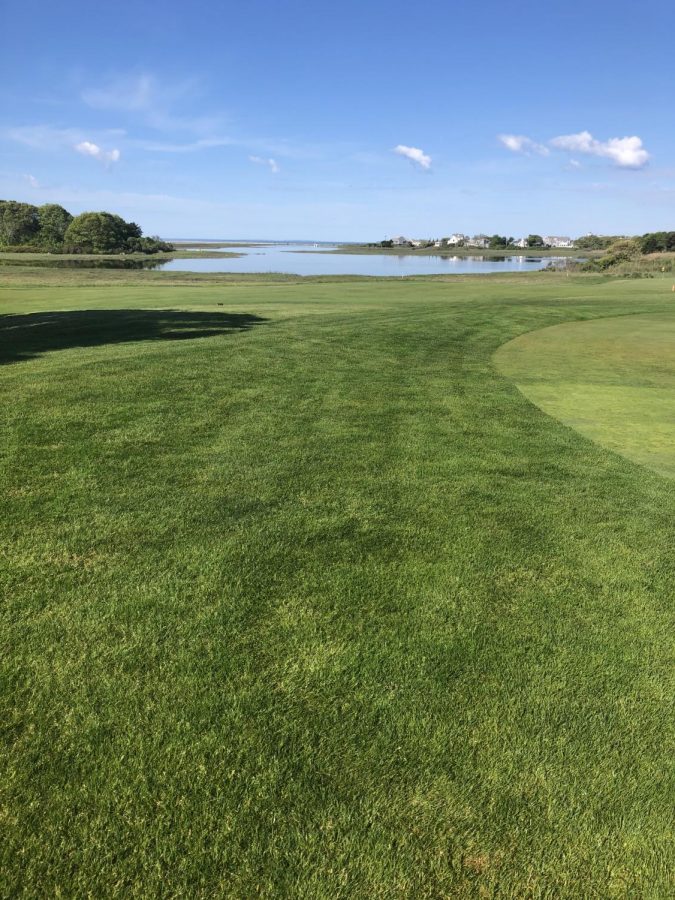The Science of Golf in Barnstable
Photo by Evan Fishback
A lot of work goes into making courses look like this one at Hyannis Ports fourth hole.
June 7, 2021
The National Golf Foundation estimates that around 1.13 million rounds of golf are played on Cape Cod annually. Though there is such an abundance of golfers on Cape Cod, not many know what it takes to maintain a course and the science behind it.
The most important part of maintaining a course is agronomy, the study of turf grass management. This is the degree required if one wishes to be a golf course superintendent, the person who is in charge of keeping the course as green as it is.
Hyannisport Club superintendent Tom Colombo said, “It’s not cookie cutter,” each course is a different micro-climate. He added that though the practices are similar, the frequency and timing in which they’re done is different for each course.
At Hyannisport they have several interesting practices that are safe for the environment and effective for the course at the same time. One of those methods is the use of seaweed extracts. They are used to help with the stress tolerance of the grass.
These processes are ever-changing though, with technology coming up with new bio-stimulants each year the courses and their superintendents have to adjust with them. Grounds crews can’t just throw a new bio-stimulant out onto a course though. Colombo said that, “There is no better place to test than your own course.” So using Hyannisport’s nursery, they test to see which products work best and how to effectively put them to use.
Being environmentally friendly is a top priority. Hyannisport, which is located right on Nantucket Sound, is a certified Audubon sanctuary, meaning that protecting the environment is the biggest goal of the course. To keep the course environmentally friendly, Hyport follows best management practices or BMP, which determines what practices or methods are effective in reducing the level of pollution generated.
Though Hyannisport has subtle differences compared to other courses, the basics are the same. A golf course is a golf course; we all try to accomplish the same thing. is the superintendent at the Blue Rock Golf Course in Yarmouth. As a former employee at Hyport he knows what it takes to produce a course of that high quality.
Players are aware of the struggles facing courses too. BHS golf coach, Mark Titus said that there certainly are differences between public and private courses. It’s not all bad, but golfers note the budget and workforce of a course while playing.
Mowing, aerating, thatching, and watering are practices observed by all courses no matter the budget or crew size. “A golf course is a golf course; we all try to accomplish the same thing.” Bornas said. Though workforce and budget might not be equal among all courses, the goal of providing the best playing conditions is the same for all.
Being a superintendent isn’t just about the grass though. It involves balancing a budget and making sure you can afford workers along with the bio-stimulants. Not only is the budget important, but communication with golfers is crucial. Letting the members know what’s going on with the course and things to look out for while out on it.
“Growing grass is easy, dealing with people is hard.” Colombo said, jokingly.


